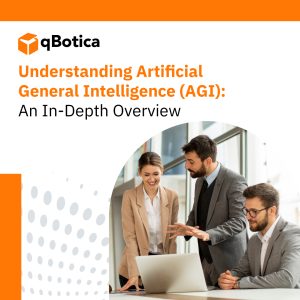Every successful RPA implementation starts with Intelligent Process Discovery
By understanding tasks and processes via AI systems, an organization can reveal it’s next automation target. Business Process Discovery or BPD is a method applied to a business to determine its processes and their possible automation.
While Robotic Process Automation or RPA provides a tremendous value to any business by automating repetitive tasks and processes, it is important to know what tasks need to be automated in the business.
Normally the tasks and processes that can be automated are:
1. Repetitive,
2. Rule-Based,
3. Inefficient,
4. Bottlenecks in the system.
But how can you accurately identify these processes in your business?
This is where intelligent process discovery comes into play. It takes out the guesswork from identifying the next process to automate by applying precise science, AI and mathematical systems to understand all tasks within the business. As it understands these tasks, it learns from them and creates data points. For a team to evaluate automation potential, it needs data. It needs to understand the various moving pieces of a business and where they can step in and apply software bots to take over. Broadly that learning process is divided into two aspects – Task mining and Process mining.
1. Task mining: This is to understand what tasks are being performed and their repetitiveness. This is more employee and people focused. It observes, learns and understands the tasks and whether they are individual, team or cluster-based. Task mining will create data points from all of these. This. however, is only half the information. Any task is performed as a part of the bigger business process. Tasks, techniques and actions come together to make a process. That leads us to the next step.
2. Process mining: There are multiple moving parts in a business that might be invisible to data mining. Chats, work sheets, documents that are incompatible, and other enclosed softwares. These invisible aspects create a data vacuum and that creates a gap in automation. This might lead to faulty implementation of RPA’s and their subsequent failure. Process mining is the part where the process is discovered and documented. It can be then compared to existing processes and examined for possibility of improvement. If better processes exist, those models can be reverse engineered. Combining the process and task mining information, automation potentials are predicted, calculated and created.
This is how the automation potential of a particular business is evaluated, using precision AI technology. Once the gaps are discovered, custom-made automation solutions are built from the ground up. These are then deployed and tested in the existing business systems. It doesn’t stop here. These systems come back with more data to improve the automation potential of the business. The best aspect of RPA is that it can constantly evolve, improve and grow along with the business.
Solutions provided by qbotica, like Disqover, handle these mining processes as well as the overall process discovery. This helps your small or large business to automate correctly. No teams throwing darts, but pure science and data. This makes sure that the automation implementation is the most efficient and effective for your business.
Give you process discovery a reboot! Contact us today.




